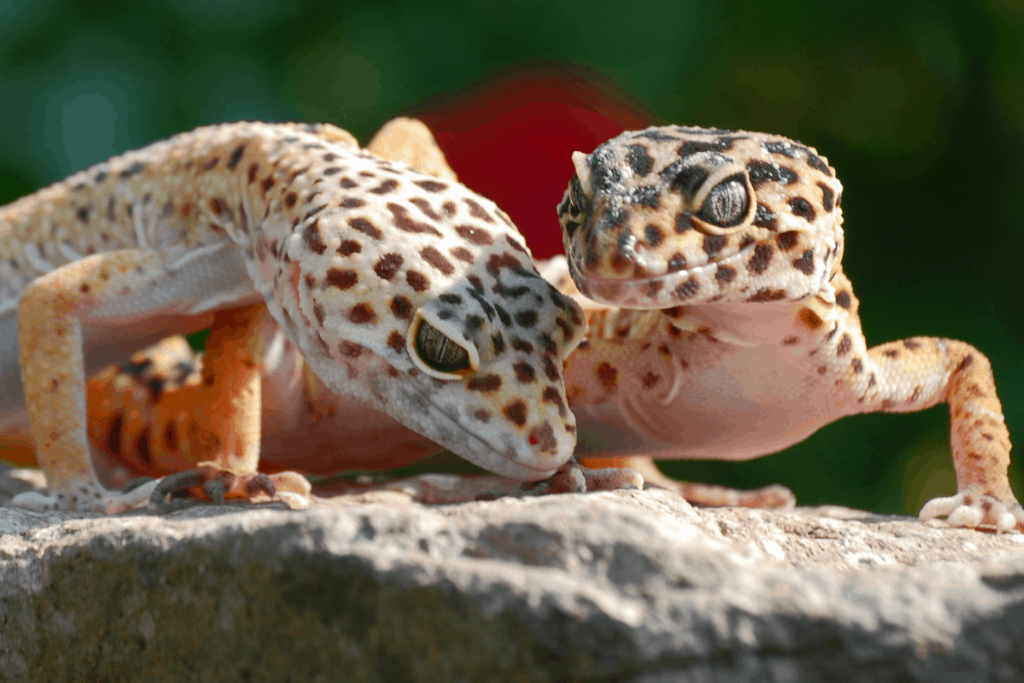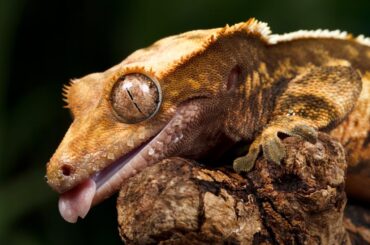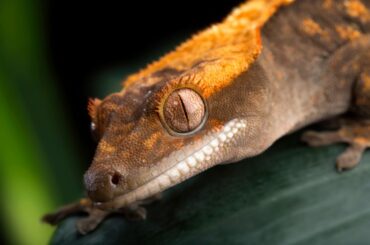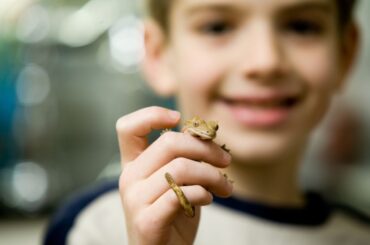Ever wondered how to tell male and female leopard geckos apart? What distinguishes male and female geckos? How does knowing these distinctions improve care? How can identifying male and female leopard geckos improve their health and breeding?
Leopard geckos are popular globally due to their attractive appearance, manageable size, and intriguing behaviors. Whether you own one as a pet or are simply curious, understanding their physical traits can assist you in caring for them.
Recognizing the distinctions between male and female geckos ensures they thrive in the appropriate environment.
This article wants to show you how male and female leopard geckos are different. Knowing these differences helps us care for them better so they are happy and healthy.
General Characteristics of Leopard Geckos
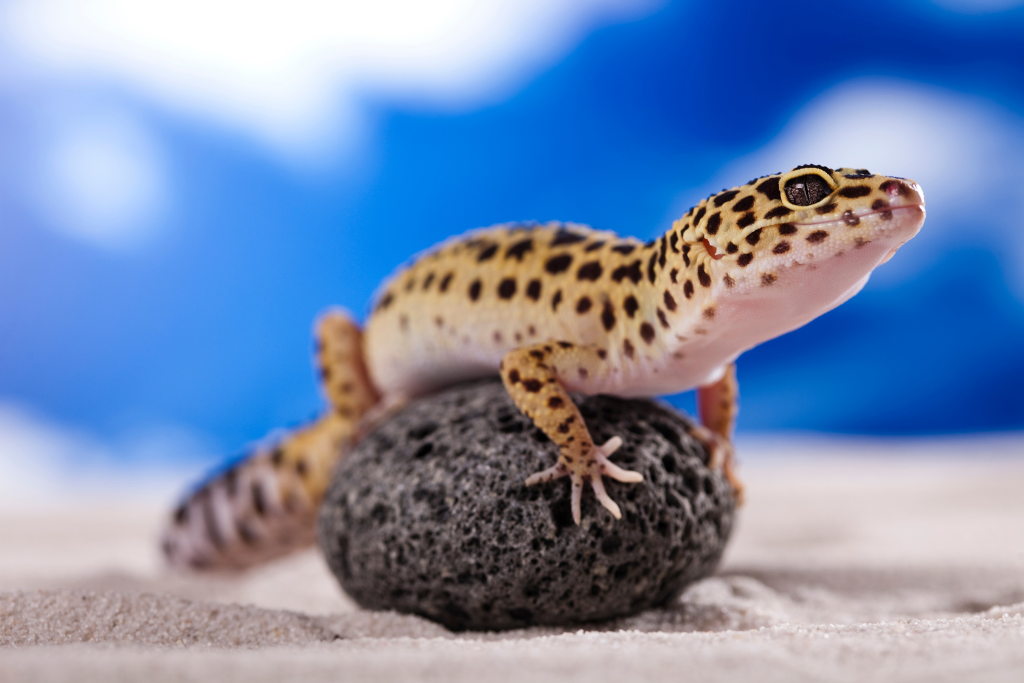
Leopard geckos, scientifically known as Eublepharis macularius, are adored pets worldwide. These geckos, from the deserts of Central Asia and the Middle East, are named by their speckled look, which resembles the huge cats.
These fascinating creatures live in dry and rocky places. They are found in Afghanistan, Pakistan, Iran, and India. Leopard geckos have learned to master the art of survival in these regions, where the scorching sun gives way to cool, moonlit nights.
Leopard geckos are known for their beautiful patterns and interesting behavior. They have flexible eyelids and can’t scale smooth surfaces with adhesive toe pads like many geckos. They maneuver their rugged terrain with quickness and precision.
Physical Differences
Before we talk about the unique things that make male and female leopard geckos different, let’s learn about what makes them interesting.
Leopard geckos have colorful patterns on their skin and move around well. These things make them unique among reptiles.
Size and Weight
Male and female leopard geckos look different in size. Usually, male geckos are bigger and heavier than females. Grown-up male geckos can be around 8 to 11 inches long, while female geckos are a bit smaller, about 7 to 8 inches. Also, male geckos are stronger and more muscular, which makes them weigh more than females.
This difference in size isn’t just for leopard geckos – many reptiles are like this. Size matters for how they act and make babies. Remember, these size differences are how geckos change to fit where they live and what they do in nature.
Hemipenal Bulges
You can easily tell male leopard geckos apart from females by looking for hemipenal bulges near the base of their tails. This distinction is similar to how you can tell a person’s gender based on certain physical features. Females don’t have these bulges, making it a clear indicator of which ones are male geckos.
These structures hold significance beyond mere identification; they’re crucial for reproduction and play a key role during mating. By exploring the purpose of these bulges, we gain insights into the intricate dance of reproduction in the world of leopard geckos.
Pores
Femoral pores distinguish male and female leopard geckos. Femoral pores on the undersides of male thighs are more noticeable than those on females. These pores are not just random markings but play a role in geckos’ natural behavior.
Scent-marking using the femoral pores helps geckos establish their territories and communicate with other species. Males emit waxy scent signals from their large femoral pores. These signs indicate their mate readiness or territory claim. Although less visible, female pores are used for subtle communication.
Behavioral Contrasts
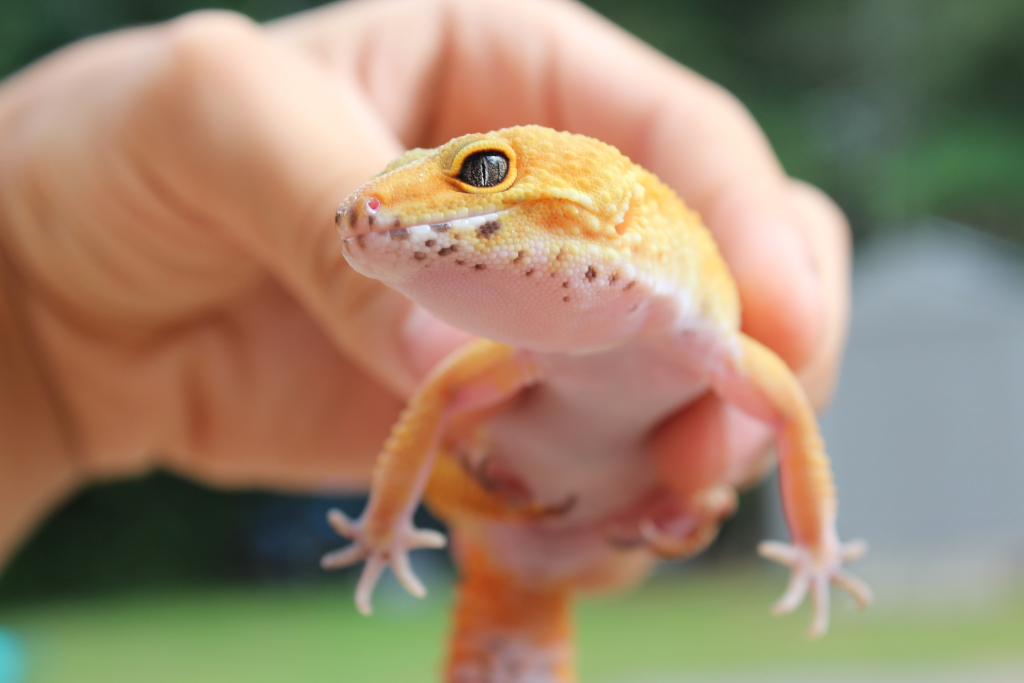
As we learn about how male and female geckos act differently, let’s enjoy how they move and do things. When we watch how they behave, we can learn about their jobs in nature and how they talk to each other.
Territorial Behavior
Male leopard geckos are territorial, especially during the breeding season. Males compete for female’s attention as the drive to mate grows. This competitive urge typically manifests as territorial disputes between the males over habitat.
During certain times, male leopard geckos show strong interactions with each other. They do this to find mates and have offspring. This behavior shows their strength and desire to keep their group alive.
Vocalizations
Vocalizations distinguish male leopard geckos. These intriguing creatures make peculiar sounds during courtship rituals. Their mating behaviors depend on these vocal cues. Males transmit their intentions to possible mates through clicks, chirps, and other complex sounds.
Female leopard geckos are quieter and produce fewer vocal clues. While males use their voices to court, females use their actions. Body language and placement reveal their responses, making encounters more sophisticated. This vocal variation shows how male and female geckos interact and court differently.
Reproductive Aspects
Exploring how leopard geckos make more geckos is fascinating. They have special ways to find mates and lay eggs. Learning about this helps us know how these reptiles keep their group going.
Mating Behavior
Male leopard geckos woo possible mates with elaborate rituals. These rituals are remarkable displays of female attention-seeking. Males perform captivating visuals, vocalizations, and physical actions to demonstrate their partner’s compatibility.
Female geckos help males reproduce during courtship rituals. Their reactions to these shows reveal their mating choice. These courtship rituals let female geckos evaluate possible partners’ vitality and fitness.
Egg-Laying
Egg-laying reveals another fascinating element of leopard gecko reproduction. Both male and female geckos are important, but the females shine in this extraordinary voyage. After mating, female leopard geckos build a nest and lay eggs.
Parthenogenesis is one of leopard geckos’ most unusual reproductive talents. Some female geckos can deposit viable eggs without mating. Their asexual reproduction produces progeny. Parthenogenesis, which occurs in some female geckos, shows how these animals preserve their genetics without a male partner.
How to Sex a Leopard Gecko
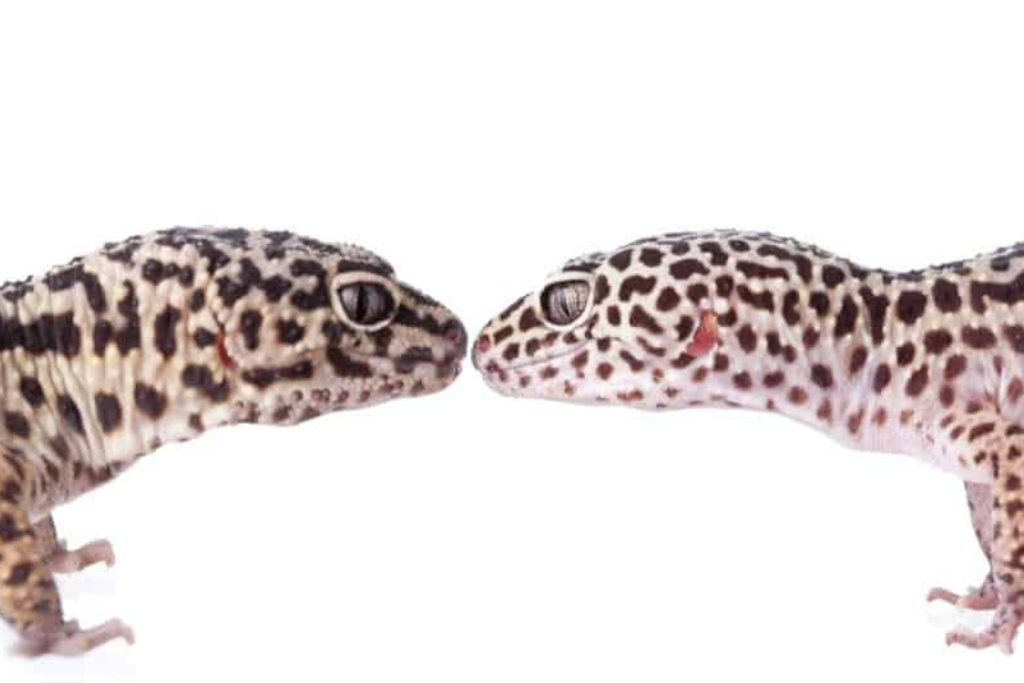
Understanding the gender of your leopard gecko is valuable for their care and knowledge about their behavior. Let’s explore various methods to determine whether a leopard gecko is male or female.
Visual Methods of Sexing Leopard Geckos
By closely observing their appearance and behavior, we can discern the gender of leopard geckos using visual cues.
Size and Body Shape Examination
Begin by comparing the sizes of leopard geckos. Males tend to be larger and heavier than females. Additionally, observe their body shapes; males often have broader heads and a generally sturdier build, while females are relatively more streamlined.
Tail Characteristics
Assess the characteristics of the tail. Males often possess a wider and bulbous base of tails than females. This difference is linked to hemipenal bulges in males, which females lack.
Color and Pattern Variations
Pay attention to the color and patterns on their bodies. While not always definitive, some males display more vibrant colors and bolder designs, especially during the breeding season. Females may exhibit more subdued hues. These variations can hint at their genders.
Femoral Pore Examination Technique
Examining femoral pores is an effective method for determining the gender of leopard geckos. These small pores on the underside of their thighs can provide insights into their biological sex. Follow this technique to examine your leopard gecko:
- Prepare a Comfortable Environment: Choose a calm and well-lit area for the examination. Gently handle the gecko, ensuring both you and the reptile are at ease and stress-free.
- Lift the Tail: Lift the gecko’s tail with care to avoid causing discomfort. Males typically have visible femoral pores on either side of the vent, while females may have fainter or less distinct pores.
- Observe the Pores: Inspect the area around the vent for femoral pores. Males usually have prominent pores, which may appear as rows of tiny dots. On the other hand, females might possess faint or less noticeable pores.
- Note the Location: Femoral pores are usually located on the inner thighs, running parallel to the body’s length. The number and appearance of these pores can vary among individual geckos.
Hemipenal Bulge Inspection
Another effective method to determine the gender of leopard geckos involves inspecting their hemipenal bulges. These small structures near the base of the tail provide valuable clues to their sexes.
By mastering the hemipenal bulge inspection technique, enthusiasts can better understand these reptiles and ensure their proper care. Follow these guidelines:
- Create a Calm Environment: Choose a quiet and comfortable area to examine the gecko. Make sure both you and the gecko are relaxed before proceeding.
- Gentle Palpation: Gently hold the gecko’s tail between your thumb and forefinger, carefully moving your fingers along its length.
- Detect the Hemipenal Bulges: In males, you’ll notice two small bulges on either side of the tail base. These bulges are absent in females.
- Understanding Significance: Hemipenal bulges are a clear indicator of male gender. They’re a crucial structure for reproduction, as they’re used during mating to ensure successful fertilization.
Age Considerations for Sexing Leopard Geckos
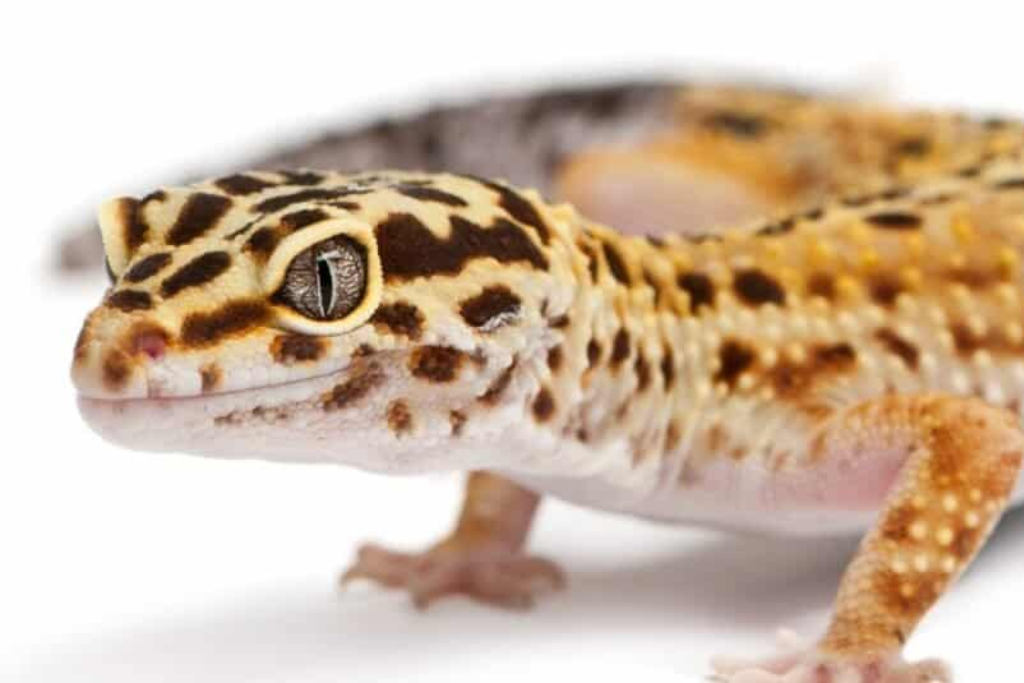
Sexing juvenile leopard geckos can be quite a puzzle due to their subtle physical traits. Young geckos might not display the characteristics that define their genders. Patience is key when it comes to determining their sexes accurately.
It’s best to wait until your juvenile gecko matures to determine their gender. Their bodies develop features that help identify gender around 6 to 8 months. Giving them time to mature clarifies their traits.
Learning to sex leopard geckos is fun, but professionals are sometimes better at doing so. Veterinarians and competent breeders may accurately determine genders, especially in difficult circumstances. Asking for assistance ensures your geckos are properly cared for and gendered.
Seeking Professional Help
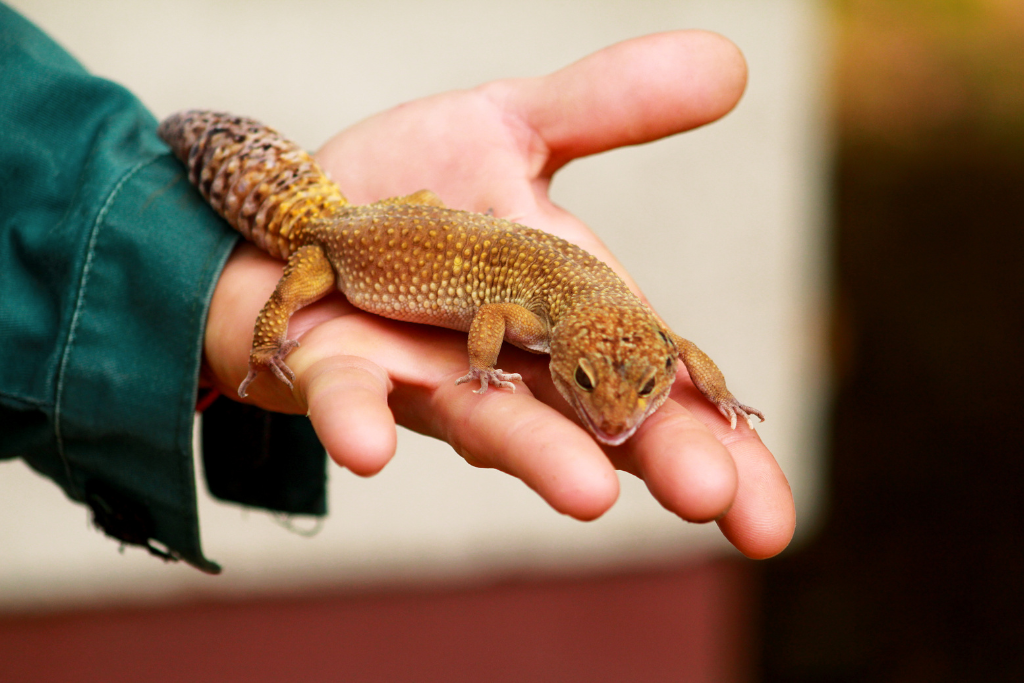
When accurately sexing your leopard geckos, seeking professional help can make all the difference. Veterinarians and competent breeders can spot small distinctions between male and female geckos. Their expertise ensures accurate gender information for your geckos, improving their health.
Learning about sexing techniques can be enjoyable, but sometimes it’s preferable to trust people who work with these critters. Getting professional guidance guarantees your geckos receive the greatest care.
Conclusion
Leopard geckos’ genders unlock the door to correct care and breeding. This gender determination trip reveals their behavior, health, and interactions. Accurate gender identification lets us personalize care to their well-being and pleasure.
We conclude this research with a reminder of the charm of both male and female leopard geckos. Each gender’s courtship, reproductive tactics, and behaviors are unique to the ecology.
FAQs
Is It Better to Have a Female or Male Leopard Gecko?
Both genders have their own unique charms. Males tend to be larger, while females might be more docile. Your choice depends on your preferences and care plans.
Are Female Leopard Geckos Bigger Than Males?
Generally, males are larger and heavier than females, showcasing distinct size differences.
Are Male or Female Leopard Geckos More Aggressive?
Neither male nor female leopard geckos are inherently more aggressive than the other.
Do Female Geckos Lay Eggs Without a Male?
Yes, some female geckos can lay fertile eggs without mating, a phenomenon known as parthenogenesis.

